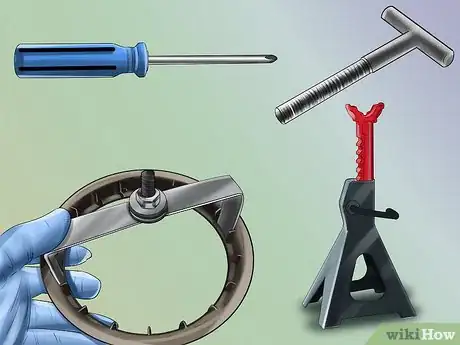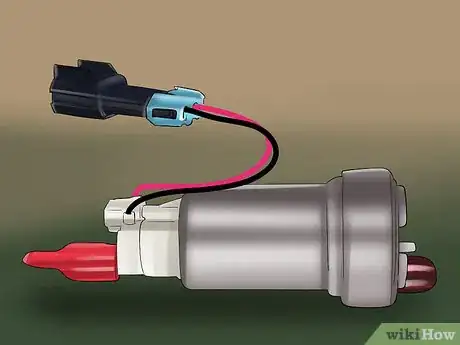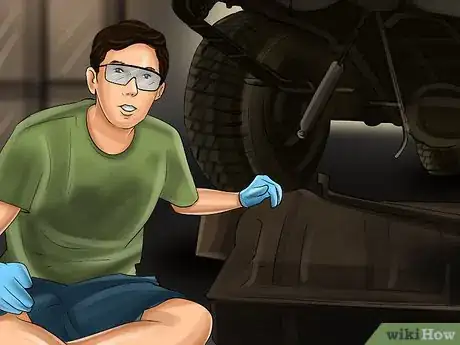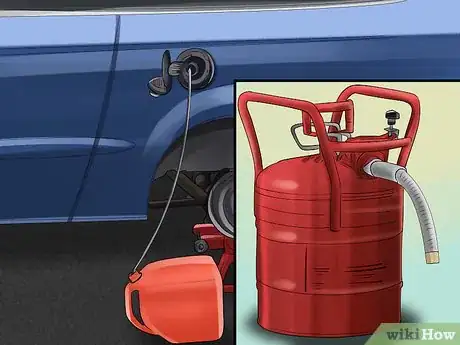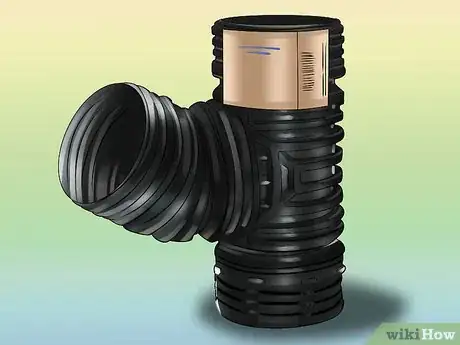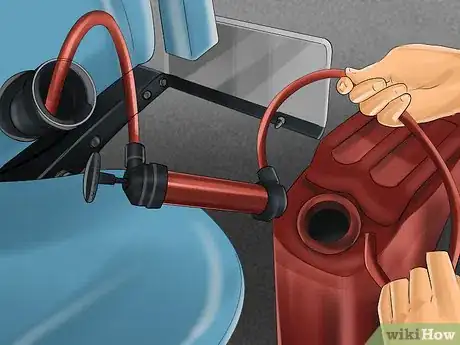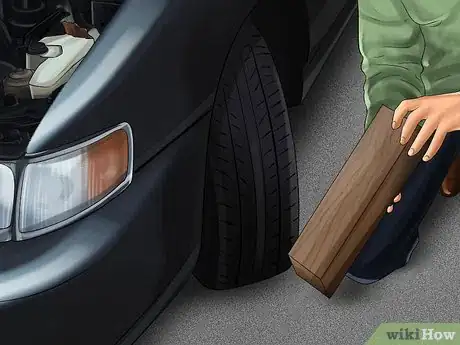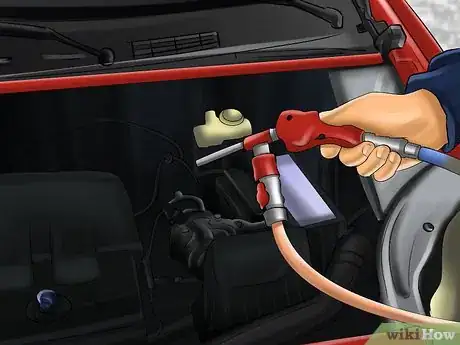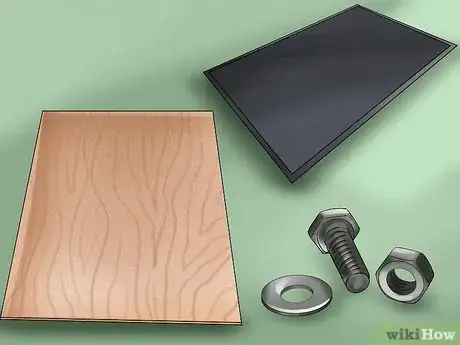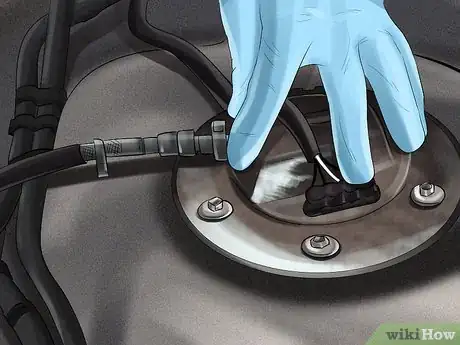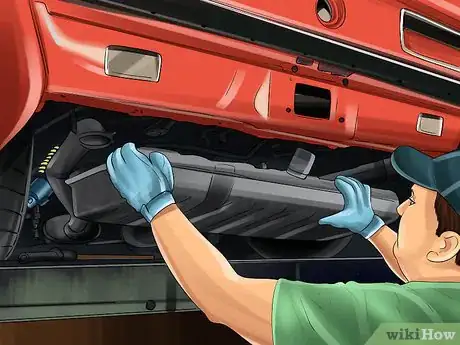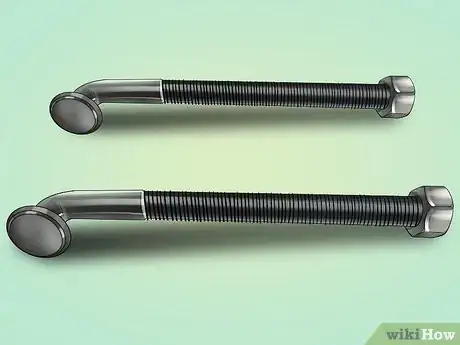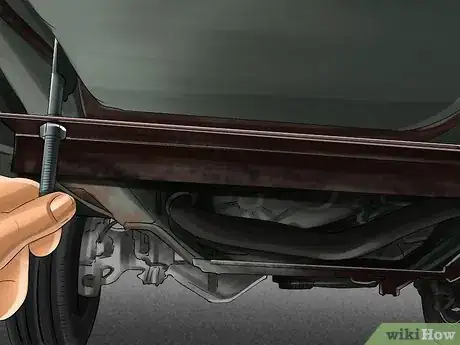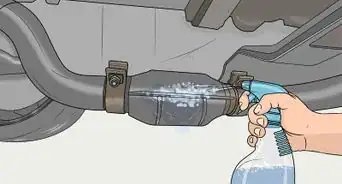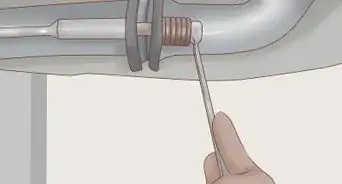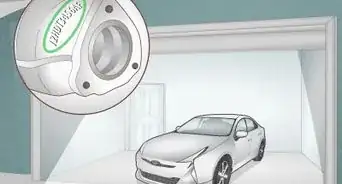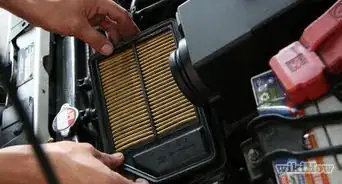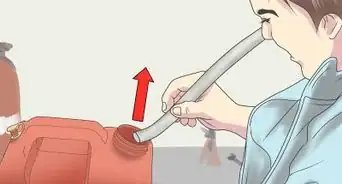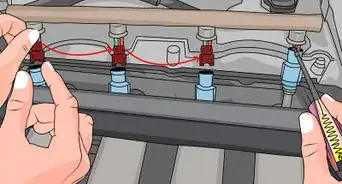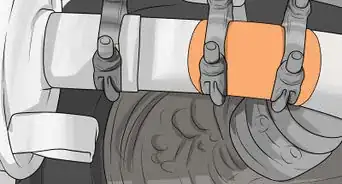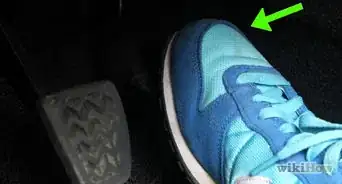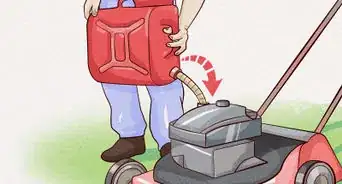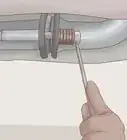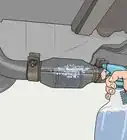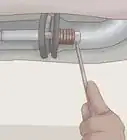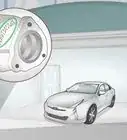X
wikiHow is a “wiki,” similar to Wikipedia, which means that many of our articles are co-written by multiple authors. To create this article, 9 people, some anonymous, worked to edit and improve it over time.
This article has been viewed 72,572 times.
Learn more...
The need to remove or lower a gas tank from an automobile is very uncommon, but there are a few instances where it may be necessary to drop the gas tank. Components like an internal fuel pump, the fuel gauge sensor, or fuel lines and electric wires may need to be serviced, replaced, or repaired. This article will walk you through everything you need to know about dropping a gas tank safely and efficiently.
Steps
Method 1
Method 1 of 4:
Preparations
-
1Make sure you have the necessary tools and equipment for the task. There are many different fasteners, clamps, and connections that must be removed or loosened to remove a fuel tank. Here are some:
- Strap bolts, usually requiring a 1⁄2 or 9⁄16 inch (1.3 or 1.4 cm) or 12, 13, or 14 mm open-end wrench.
- Slotted and Phillips screwdrivers for hose clamps.
- Special tools for disconnecting fuel line fittings.
- Other items you may need include a jack, jack stands, a pump for removing the fuel, fuel rated containers for fuel that is removed from the tank, rags, and a fire extinguisher in case of an emergency.
-
2Locate the vehicle on a flat surface, preferably a concrete driveway, since asphalt can be damaged if you spill fuel on it. Hard, compacted soil is acceptable if no other option is available.Advertisement
-
3Make sure you have access to repair parts before beginning this project. Submersible fuel pumps are usually readily available from a local auto parts supplier, but fuel level sensing units may require special ordering from a dealer.
-
4Try to get help before beginning this project. Even an empty gas tank can be heavy and difficult to manage while lying underneath a vehicle. It is also better to have an assistant to hand you tools, and to respond if you have an accident while performing this task.
Advertisement
Method 2
Method 2 of 4:
Removing the Fuel
-
1Remove the ground cable of your battery to avoid sparks before continuing with this step.[1]
-
2Make sure the container you are draining the fuel into is large enough to hold it all. Most fuel tanks have a 12 to 20 gallon (45.4 to 75.7 L) capacity, so if your fuel gauge is working properly, you can estimate the amount of fuel in your tank. Get the EPA/Underwriter's Laboratory approved gas container ready below your car in a position to catch the draining fuel. Remove the drain plug if your car has one, being careful not to allow the fuel to spill on your person when it begins to drain.
- If your car doesn't have a drain bolt, find your tank's drainpipe or filler hose.
-
3Locate the proper adapter for your car's drainpipe or filler hose, if necessary, and connect the intake hose from an air or hand pump to the pipe.
-
4Place the discharge hose of the pump into the gas container. Use the pump to extract all of the fuel. Seal any openings so vapors cannot escape.[2]
Advertisement
Method 3
Method 3 of 4:
Raising the Car
-
1Chock the front wheels of the car, making sure it can't roll while you are raising it or working underneath it.[3]
-
2Lift your vehicle with a hoist or a jack. You will need to raise it high enough to access the brackets or straps that secure the tank, and if the tank it to be completely removed from underneath the vehicle, you will want to be sure it is high enough the tank will clear the frame members. Once the car is lifted off the ground, support it with jack stands.[4]
Advertisement
Method 4
Method 4 of 4:
Removal of the Tank
-
1Blow compressed air to remove debris from the outside of fuel lines and wiring connectors. You might have to do this a couple of times, using a small stiff brush to loosen the accumulated debris.
-
2Place a work mat, a sheet of plywood, or even a scrap piece of carpet underneath the car to lay on while working for your own comfort, and to prevent the loss of fasteners, nuts, and washers if you want. This will also give you something to protect the tank if you need to drag it out from underneath the vehicle.
-
3Disconnect the fuel tank wiring harness connector from the auto body's harness connector. Remove the ground wire screw from the chassis if your vehicle if it is equipped with one.[5]
-
4Remove the fuel lines from the gas tank. Sometimes you need a specialized tool to separate "quick disconnect" fittings. Consult your vehicle's service manual for directions on your specific type of car.
-
5Wipe off the filler and vent pipes with a soft towel and disconnect their tubes to the tank. Note that often, the tank must be dropped several inches before you can access these connections, so be careful they do not become fouled while doing so.
-
6Unhook your filler neck. There are two possible types. If yours is one piece, remove the screws around the filler neck. If it is a two or three-piece assembly, loosen the clamp and remove the neoprene hose from the filler neck. Make sure the fuel hose that goes to the top of your gas tank has enough room to drop down when the tank is lowered. These are often molded assemblies and may need to be guided while the tank is lowered to avoid obstructions and possible damage to this part.[6]
-
7Locate the fastening system that holds your fuel tank in place. Usually, there are two straps that wrap around the fuel tank, the ends of which are adapted to bolts that fasten through a bracket mounted to the vehicle's frame. Some vehicles have two support frames similar to a trapeze with four bolts fitted through them which must be removed.
-
8Loosen the gas tank strap bolts until they are only held on by enough threads to support it. Carefully lower the fuel tank to the ground as you finish loosening the bolts. You may be able to place a low profile floor jack underneath the tank to help lower it, provided you have one and the car is jacked up high enough to allow it.[7]
-
9Pull the gas tank support straps out from around the tank so they do not interfere with moving it. They are fairly flexible, but make sure you don't kink or damage them in the process.[8]
-
10Remove the tank from underneath the car by dragging it sideways. Perform the maintenance or repairs required to the tank, then reinstall it by following the previous steps in reverse order.
Advertisement
Community Q&A
-
QuestionWhat will clean inside of gas tanks?
 Community AnswerIf it's really rusted inside, use diesel fuel of about 1/2 gallon. You will need two people to hold it up and shake it around, then empty it with a suction hose. If not rusted, look for a gas tank cleaning company or try a recycle auto parts yard in your area. A salvage yard might be cheaper than a cleaning service.
Community AnswerIf it's really rusted inside, use diesel fuel of about 1/2 gallon. You will need two people to hold it up and shake it around, then empty it with a suction hose. If not rusted, look for a gas tank cleaning company or try a recycle auto parts yard in your area. A salvage yard might be cheaper than a cleaning service. -
QuestionWhere is the fuel filter located?
 Community AnswerIt could be inside the tank, inside the pump, or it could be an inline filter. Check with your local mechanic shop or consult a repair manual.
Community AnswerIt could be inside the tank, inside the pump, or it could be an inline filter. Check with your local mechanic shop or consult a repair manual. -
QuestionCan I buy something to clean sugar from a gas tank?
 Logic Johnson LafontaineTop AnswererThere aren't any reliable products sold over the counter for this. The only way to clean it is to physically drop the tank and dump the crap out. Also, I hope for your sake that the car hasn't been driven since the sugar got in the tank, or else your entire fuel system will be contaminated (pump, lines, injectors, etc.), and then you've got a much bigger problem on your hands.
Logic Johnson LafontaineTop AnswererThere aren't any reliable products sold over the counter for this. The only way to clean it is to physically drop the tank and dump the crap out. Also, I hope for your sake that the car hasn't been driven since the sugar got in the tank, or else your entire fuel system will be contaminated (pump, lines, injectors, etc.), and then you've got a much bigger problem on your hands.
Advertisement
Warnings
- Always use an approved gas container. Failure to do so can cause spills.⧼thumbs_response⧽
- Never try to move a gas tank when it has any gasoline in it. Gasoline is very heavy and attempting to move the full tank can result in injury and spills.⧼thumbs_response⧽
- Do not use torches to heat up stubborn bolts. Be careful not to knock over your drop lights while working. Sparks from these can cause gas fumes to explode.⧼thumbs_response⧽
- Always dispose of contaminated gasoline following local laws.⧼thumbs_response⧽
- Always wear eye protection and gloves when working and work in a well-ventilated area.⧼thumbs_response⧽
Advertisement
Things You'll Need
- Eye protection and gloves
- EPA approved gas container
- Pump and hose fittings
- Car hoist or jack and stands
- Compressor or can of compressed air
- General Tools (screwdriver, wrench, etc.)
- Fitting tools (if needed)
- Fire extinguisher
References
- ↑ https://www.youtube.com/watch?v=xzG2tvp68mQ
- ↑ https://www.youtube.com/watch?v=369co9HM1SU
- ↑ https://www.youtube.com/watch?v=t6TRIRaAZwY
- ↑ https://www.2carpros.com/articles/jack-up-and-lift-your-car-safely
- ↑ https://www.youtube.com/watch?v=AOejsuF72vE
- ↑ https://youtu.be/5gm_m1hKtY8?t=165
- ↑ https://www.youtube.com/watch?v=369co9HM1SU
- ↑ https://www.youtube.com/watch?v=AOejsuF72vE
About This Article
Advertisement
